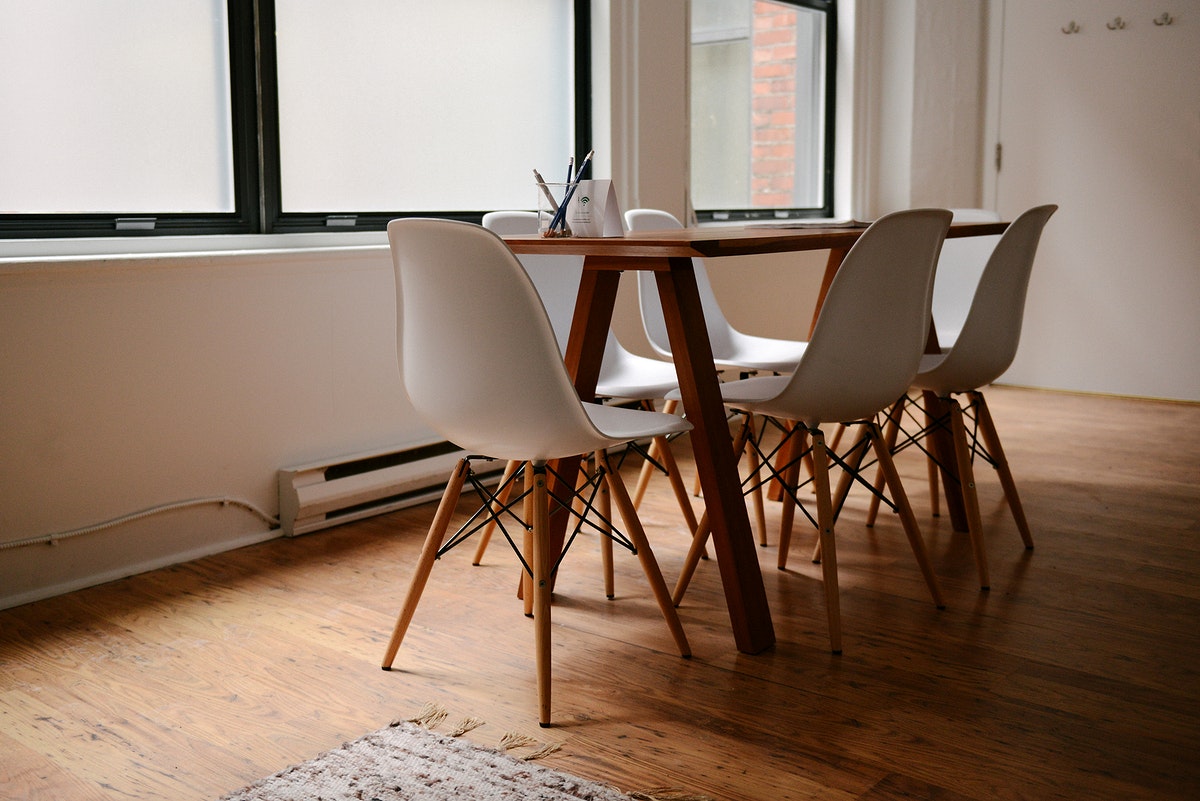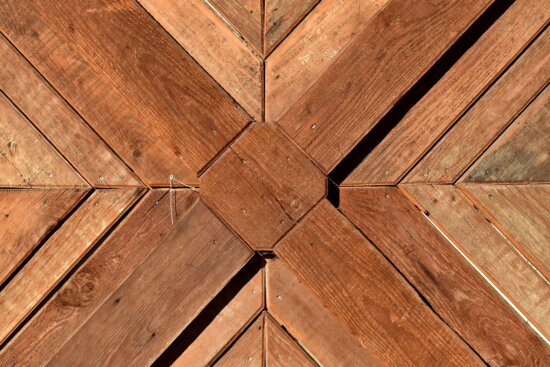8 Steps to Install Clip-in Floating Parquet
Contents
– Before installing clip-in floating parquet
– Step 1: Install insulation
– Step 2: Lay the first row of boards
– Step 3: Cut the floor
– Step 4: Install the next boards
– Step 5: Clip the boards
– Step 6: Attach the boards
– Step 7: Install the last row
– Step 8: Attach the baseboards
It is relatively easy to install clip-in floating parquet. Indeed, the floorboards fit together, so you don’t need to use glue. Simply tap the boards with a mallet to secure them.
The installation of the classic floating parquet is much the same. Just add a thin line of glue before interlocking the boards.
But before installing clip-in floating parquet, you must prepare the floor so that it is smooth, flat and clean and then plan the order of installation of the boards during the layout stage for a straightforward installation.
Here are the materials and steps to install clip-in floating parquet.
Before installing clip-in floating parquet
Before installing your clip-in floating floor, make sure that the opening of the doors will not be hindered by the thickness of the insulation and the floor you are going to install.
– Place a piece of insulation on the floor, at the level of the door, and place a strip of parquet on top.
– Open your door:
◦ If it opens smoothly, you don’t need to cut the bottom of the door.
◦ If it can’t open because of the thickness of the parquet + insulation, then you need to plane it.
– Mark the bottom of the door with a marker and a ruler.
– Saw off the bottom of the door.
– Saw off the bottom of the door frames as well.
1. Insulation installation
Before installing clip-in floating parquet on a concrete floor, a tile floor or an existing parquet floor, install an anti-humidity insulator made of polyethylene, and then install a sound insulator made of cork or felt, which will reduce noise.
Note: installing an insulator is unnecessary if you install your floating floor on a carpet. However, if the carpet is thick, you will have to remove it and prepare the floor before installing the clip-in floating floor.
Install the moisture barrier
Polyethylene moisture insulation comes in roll form:
– Start installing the polyethylene insulation from the corner of two walls.
– Unroll the polyethylene roll along the wall, pulling it up about 5 cm on the wall.
– When you reach the opposite wall, cut the polyethylene strip with a cutter, leaving a 5 cm margin.
– Lay the second strip, in the same way, making sure to overlap the strips by about 15 cm.
– Secure the insulation strips together with aluminum tape.
– Also, fasten the edges to the bottom of the walls with aluminum tape.
Install the soundproofing
Soundproofing comes in cork or felt panels to be placed on the floor. Soundproofing is always installed after the moisture barrier.
– Lay the insulation panels on the floor; the direction of the panels is essential: they must be laid perpendicular to the length of the floor.
– Leave a gap of about 2 mm between the panels.
– Leave a gap of about 10 mm between the panels and the walls.
2. Lay the first row of boards
Lay the first row of floorboards from the point you chose during the layout stage. This is usually the corner of a wall:
– Place 10 mm spacers at the walls; these spacers allow delimiting the peripheral dilatation joint between the parquet and the walls.
– Place the first board at the corner of two walls; make sure that the tongue is placed on the wall side so that you can clip the following boards on the first board.
– Assemble the second board to the first by clipping it.
– Then, fix it by tapping it with a mallet: place a wedge between the board and the mallet to avoid damaging the floorboard.
– Install the entire first row of boards in the same manner.
– When you reach the end of the row, there is often a tiny gap left, so you need to cut the last board before laying it :
◦ Take measurements and cut the board.
◦ Assemble the board.
◦ Secure it with a tapping square or blade puller: slide the square between the board and the wall and tap with a hammer to secure the board.
If you are laying classic floating parquet
The installation technique for classic floating parquet is significantly different from that of clip-in floating parquet. Indeed, the boards of traditional floating parquet are interlocked, just like those of clipped floating parquet, but they are maintained with a special glue for floating parquet.
The glue is applied in a thin layer on the groove of the boards. Make sure that the track of the panels of the first row does not face the wall; otherwise, you will not be able to fit and fix the next row of boards.
Once the boards have been fitted together, clean up any adhesive residue with a damp sponge.
3. Cut the floor
The cutting of the clip-in floating floor can be done manually, with a handsaw, or with a jigsaw.
Measure and layout
– Measure the space to be filled, taking into account the spacing of the expansion joints.
– Transfer the measurements to the floorboard using a square and a grease pencil.
Cutting the floor with a handsaw
If you are cutting the floating floor manually, with a handsaw:
– Place the blade to be cut on a table or workbench.
– Saw along the lines.
Cutting the floor with a jigsaw
If you are cutting the floating floor using a jigsaw:
– Place the floorboard to be cut on a workbench or table, decor side down.
– Sew along the lines you made.
4. Lay the following boards

Install the following rows of flooring:
– If the rest of the board you sawed is more than 30 cm long, start the second row by laying it.
– If it is less than 30 cm, lay a whole board to start the second row.
– Assemble the boards of the second and subsequent rows by clipping and fastening them together, one by one.
– If you are installing conventional floating parquet, apply a thin line of glue to the grooves of the boards before interlocking them. Then, wipe off any glue spillage with a damp sponge.
5. Clip the boards
To clip the floating floor:
– Tilt the board by positioning the tongue along the groove of the first board.
– Lower the board by pressing it down to clip it in place.
– If you are installing conventional floating parquet, remember to apply a thin line of glue along the groove of the boards before clipping them together.
6. Attach the boards
Once you have clipped the board in place, secure it by tapping it with a wedge and mallet or using a tapping block and hammer:
– Place the tapping square or wooden wedge on the longer side of the blade.
– Place the square or wedge on the other end of the board and tap to secure the boards in the same row. – Tap with a mallet or hammer to secure the board to the previous row.
7. Install the last row
You often need to cut the boards to fill the remaining space when you reach the last row.
– Measure the width of the space to be filled, taking into account the expansion joint.
– Transfer the measurements to the floorboards. Remember that you must install the board part that has a tongue, so cut the board accordingly.
– Once the floorboard is cut:
◦ Lay the floorboards in their intended location. Glue their groove if it is a classic floating parquet and not clip-in floating parquet.
◦ Place the striking bracket.
◦ Tap with the hammer to secure the boards.
– When you have finished installing the clip-in floating floor, remove the wedges that you used to mark the gap of the perimeter joint and install the baseboards.
8. Attach the baseboards
It would be best to fix the skirting boards to the wall about 10 mm above the floor.
– Mark the bottom of the walls.
– Make the necessary cuts.
– Nail or glue the baseboards.
Equipment for installing clip-on floating parquet
Carpenter’s pencil
Cutter
Scribing square
Tapping square
Felt
Insulation roll
Hammer for parquet
Ruler 60 cm
Aluminum tape
Handsaw




1 thought on “8 Steps to Install Clip-in Floating Parquet”